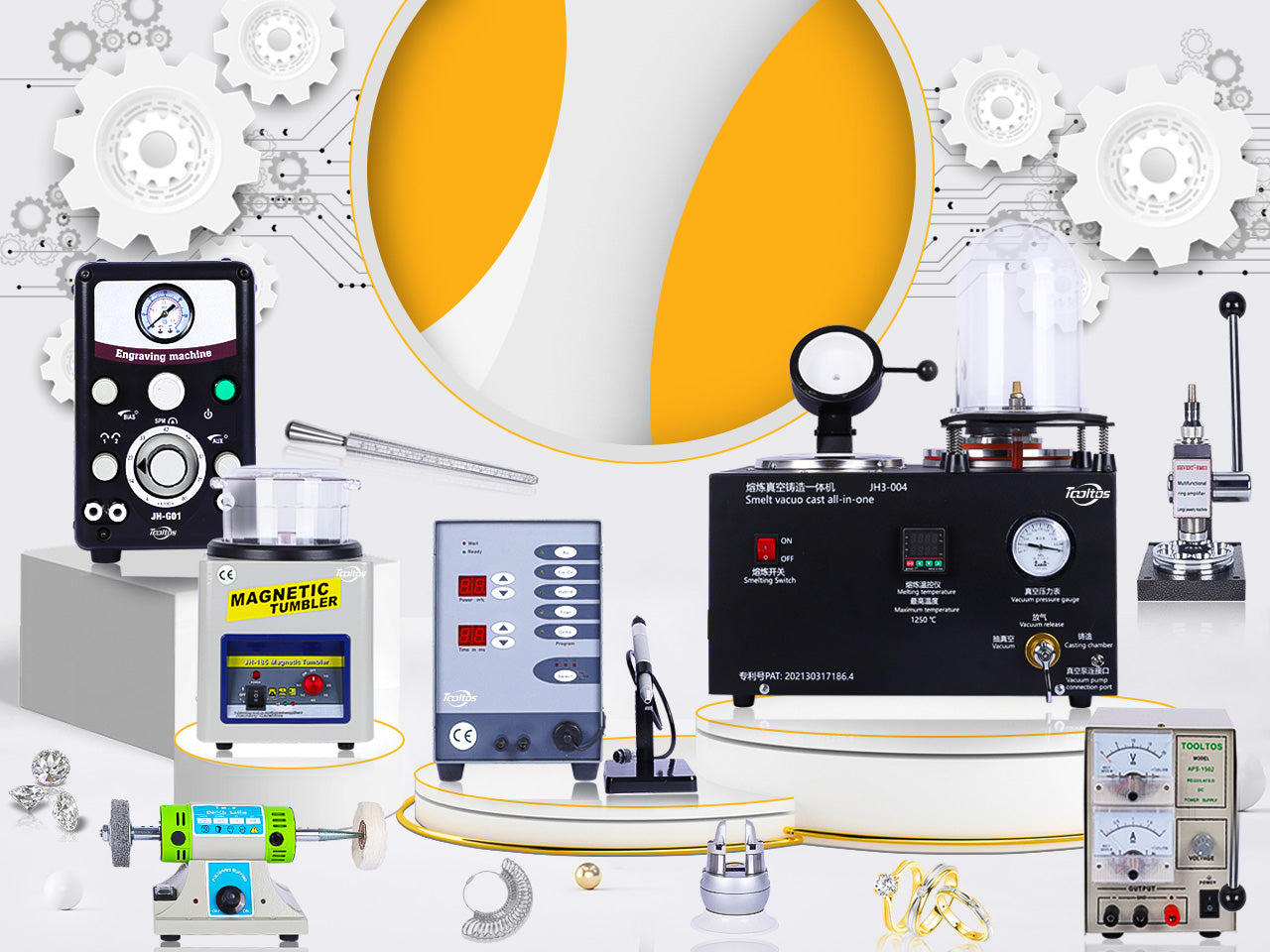When it comes to jewelry making, the finishing touches can make all the difference. A polishing motor is an essential tool for jewelers, allowing you to bring a professional shine to your pieces, enhancing their appearance and appeal. In this guide, we’ll walk through the basics of using a polishing motor effectively to achieve the best results.
What is a Polishing Motor?
A polishing motor is a specialized tool used in jewelry workshops to buff, shine, and polish metals and other materials. Typically, it consists of a motor unit with spindle attachments that hold various polishing wheels, mops, or brushes. These attachments can be swapped out depending on the material you're working with and the type of finish you want to achieve.
Setting Up Your Polishing Motor
Before you begin using a polishing motor, it’s crucial to set it up correctly:
1. Secure Placement: Place the polishing motor on a stable, level surface. It's often best to bolt the motor to a workbench to prevent any movement during use.
2. Safety First: Ensure you’re wearing safety goggles and a dust mask. Polishing can create dust and debris, which can be harmful if inhaled or if it gets into your eyes.
3. Proper Lighting: Good lighting is essential. Make sure your workspace is well-lit so you can see the details of your work and monitor the polishing process closely.
4. Ventilation: Since polishing can generate fine dust, having a well-ventilated space or an extraction system is beneficial to maintain air quality and reduce health risks.
Choosing the Right Polishing Wheels and Compounds
Polishing motors accommodate different types of wheels and compounds, each suitable for specific tasks:
Tripoli Compound and Sisal Wheels: These are great for the initial stages of polishing, especially for removing scratches and surface imperfections. Tripoli is a medium abrasive compound, while sisal wheels are firm and coarse, ideal for cutting.
Rouge Compound and Cotton Buffs: For the final polish, switch to rouge, a fine abrasive that gives a mirror-like finish. Use a softer cotton wheel with rouge to achieve a brilliant shine.
Specialty Compounds: If you're working with particular metals or materials (like platinum or acrylic), consider using specialty compounds designed for those surfaces to get optimal results.
Step-by-Step Polishing Process
1. Preparation: Before polishing, ensure your piece is clean and free of any dirt or oils. Ultrasonic cleaners are excellent for this task.
2. Initial Buffing: Start with a coarser wheel and compound. Hold your piece against the wheel lightly; apply minimal pressure to avoid overheating or warping the metal. Move your piece smoothly across the wheel's surface in different directions to ensure even polishing.
3. Intermediate Polishing: Switch to a softer wheel and use a finer compound like rouge. This step helps remove any fine scratches left by the initial buffing.
4. Final Polish: For a high-gloss finish, use a very soft buff with a high-shine compound. This step will bring out the luster in your jewelry piece.
5. Clean Up: After polishing, wash your jewelry piece to remove any remaining compound residues. A gentle soap and water solution or a steam cleaner can be effective.
Maintenance Tips for Your Polishing Motor
Regular Cleaning: Keep your polishing motor clean to ensure it runs smoothly. Remove any accumulated polishing compound and debris from the motor and spindles.
Wheel Replacement: Over time, polishing wheels wear down. Replace them regularly to maintain efficient and safe polishing. Inspect wheels for any signs of damage before use.
Motor Care: Lubricate the motor bearings as per the manufacturer’s instructions to extend the motor’s lifespan and ensure smooth operation.
Safety Precautions
Avoid Loose Clothing: When using a polishing motor, avoid wearing loose clothing or jewelry that could get caught in the spinning wheels.
Secure Long Hair: If you have long hair, tie it back to prevent it from getting caught in the machine.
Use Dust Collection: Consider using a dust collection system to minimize the inhalation of polishing dust.
Conclusion
Using a polishing motor can significantly enhance the quality and finish of your jewelry pieces, giving them a professional and polished look. By understanding the proper setup, choosing the right materials, and following a careful polishing process, you can achieve stunning results. Remember to prioritize safety, maintain your equipment, and continually practice to refine your technique.


0 comments